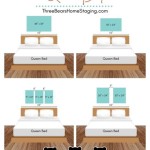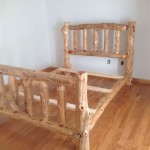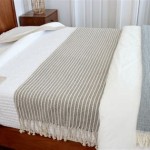How Much Weight Can A Wooden Bunk Bed Hold?
Wooden bunk beds are a popular choice for maximizing space in bedrooms, particularly in children's rooms, dormitories, and vacation rentals. Their functional design allows for two sleeping surfaces within the footprint of a single bed. However, a crucial consideration when selecting a wooden bunk bed is its weight capacity. Overloading a bunk bed can lead to structural damage, instability, and potentially dangerous collapse. Understanding the factors influencing weight capacity and adhering to manufacturer guidelines are essential for safe and reliable use.
The weight capacity of a wooden bunk bed is not a universal figure. It varies based on several factors relating to the bed's construction, the quality of materials used, and its design. Factors such as the type of wood, the thickness of the structural components, the joinery methods employed, and the presence of reinforcement features all contribute to the bunk bed's ability to withstand weight. A thorough understanding of these elements enables informed decision-making when purchasing and using a wooden bunk bed.
Factors Affecting Weight Capacity
Several interconnected factors determine the maximum weight a wooden bunk bed can safely support. Evaluating each factor provides a comprehensive understanding of a bed's overall strength and reliability.
Wood Type and Quality: The specific type of wood used in construction significantly influences the bunk bed's weight-bearing potential. Hardwoods, such as oak, maple, and birch, possess inherently greater density and strength compared to softwoods like pine or fir. Hardwoods are more resistant to bending, cracking, and compression, allowing them to bear heavier loads without compromising structural integrity. The presence of knots, grain patterns, and imperfections within the wood can also affect its strength. Timber with fewer imperfections generally exhibits higher load-bearing capacity. Furthermore, the drying process and moisture content of the wood influence its stability and resistance to warping, which can ultimately affect its ability to support weight over time. Kiln-dried hardwoods are typically considered superior for furniture construction due to their reduced moisture content and enhanced stability.
Structural Design and Construction: The design of the bunk bed, including the thickness and dimensions of the posts, rails, and slats, plays a pivotal role in determining its weight capacity. Thicker posts and rails offer greater resistance to bending and buckling under load. The method of joining these components is equally critical. Strong joinery techniques, such as mortise and tenon joints, dovetail joints, or reinforced screw connections, distribute weight effectively and prevent separation or weakening of the structure. The presence of additional support elements, such as center support beams or metal reinforcement brackets, can further enhance the bunk bed's weight-bearing capabilities. The spacing and quantity of the slats that support the mattress also contribute to the overall weight distribution. Closely spaced, sturdy slats provide more uniform support and prevent localized stress points that could lead to failure.
Hardware and Fasteners: The quality and type of hardware used to assemble the bunk bed are crucial for its structural integrity. Screws, bolts, and other fasteners must be appropriately sized and made from durable materials to withstand the stresses imposed by weight and movement. Low-quality or improperly installed hardware can loosen over time, compromising the stability of the bunk bed and reducing its weight capacity. Regularly inspecting and tightening these fasteners is essential for maintaining the bed's structural integrity. Corner brackets and other reinforcement hardware should be securely attached and capable of resisting shearing forces. The use of locking nuts or thread-locking compounds can further prevent loosening of fasteners due to vibration or movement.
Understanding Manufacturer Guidelines
The manufacturer's weight capacity guidelines are paramount for the safe use of any bunk bed. These guidelines are determined through testing and analysis that considers the materials, construction methods, and design of the specific model. Exceeding the recommended weight limit can place undue stress on the structure, leading to potential damage or even catastrophic failure.
Manufacturers typically provide clear and specific weight limits for both the upper and lower bunks. These limits often differentiate between static weight (the weight of a person lying still) and dynamic weight (the weight of a person moving or sitting up in bed). The weight of the mattress and bedding also needs to be factored into the overall load. A high-density mattress can add significant weight, particularly on the upper bunk. The combined weight of the occupants, mattress, and bedding should never exceed the manufacturer's specified weight limit for each bunk.
It is essential to retain the manufacturer's instructions and labels that specify the weight limits. These documents provide critical information regarding safe use and maintenance. If the original documentation is lost, contacting the manufacturer directly is highly recommended to obtain the correct weight capacity information. In the absence of reliable manufacturer data, it is prudent to err on the side of caution and assume a lower weight capacity to ensure safety. Furthermore, modifications or alterations to the bunk bed, unless explicitly approved by the manufacturer, can compromise its structural integrity and invalidate any warranty or safety certifications.
Safety Considerations and Best Practices
Beyond adhering to weight capacity guidelines, several safety considerations are crucial for preventing accidents and ensuring the long-term stability of a wooden bunk bed.
Proper Assembly and Placement: Following the manufacturer's assembly instructions precisely is critical. Incorrect assembly can weaken the structure and compromise its weight-bearing capabilities. Ensure that all components are properly aligned and securely fastened. The bunk bed should be placed on a level surface to prevent uneven weight distribution and potential stress points. Avoid placing the bed near windows or under ceiling fans to minimize the risk of accidents. Regularly inspect the bunk bed for any signs of damage, such as cracks, loose joints, or bent components. Address any issues promptly to prevent further deterioration.
Age and User Considerations: Bunk beds are generally not recommended for children under the age of six due to the risk of falls. Older children and adults should be instructed on the safe use of the bunk bed, including how to climb the ladder properly and avoiding roughhousing or jumping on the bed. The ladder should be securely attached to the bunk bed and designed for easy and safe climbing. Nightlights can improve visibility and reduce the risk of accidents, especially for children who may need to get up during the night.
Regular Inspection and Maintenance: Regular inspection of the bunk bed's structure, hardware, and support systems is essential for identifying and addressing potential problems early on. Check for loose screws, cracks in the wood, or any signs of instability. Tighten any loose fasteners and repair or replace any damaged components immediately. Periodically vacuum or dust the bunk bed to prevent the accumulation of dirt and debris, which can contribute to wear and tear. If signs of excessive wear or damage are detected, consider reinforcing the bed with additional supports or replacing it altogether. Routine maintenance ensures the continued safety and longevity of the wooden bunk bed.

Bunk Bed Weight Limit What You Need To Know Clafbebe

Loft Bed Bunk Beds Specifications

How Much Weight Can A Loft Bed Hold Justbunkbeds

Sy Hampton Ladder End Bunk Bed Collection American Bedding

How To Choose A 1000 Lb Weight Capacity Bunk Bed Frame Bunkbeds Com

Bunk Bed Weight Limit What You Need To Know Clafbebe

What Are The Weight Limits For Bunk Beds Picket Rail Custom Sofas Furniture

How To Choose A 1000 Lb Weight Capacity Bunk Bed Frame Bunkbeds Com

The Premier Solid Wood Bunk Bed 1000 Lbs Wt Capacity All Sizes

Twin High Corner Bunk With Angled Ladder And Stairs







